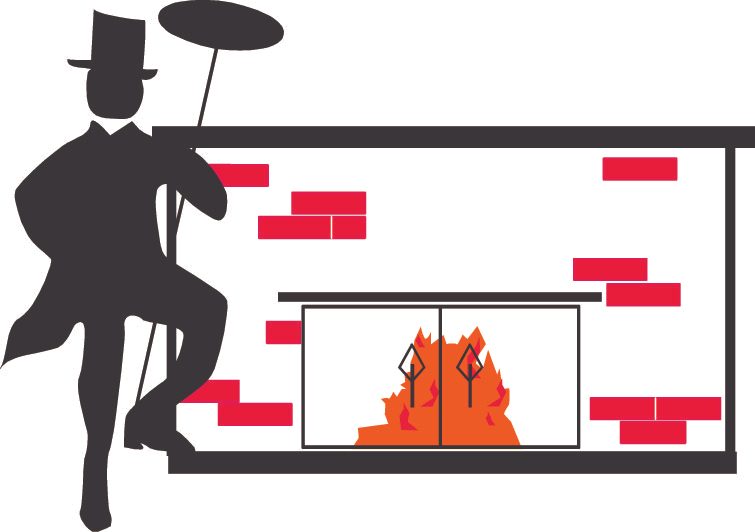There are two main types of pellet stoves in the market today: Free-standing stoves, and Fireplace Insert stoves.
A free-standing pellet stove can be vented two different ways. They can be direct vented out the side of the house, or they can be vented through an existing chimney. When direct venting a pellet stove, our experience has shown us that when the pipe goes through the wall to the outside of the house, it should also go upwards about 5 feet before terminating. This will help prevent the soot/ash from accumulating on the side of your house.
For fireplace pellet stove inserts and for free-standing pellet stoves venting into a chimney, some stove manufacturers’ installation specifications allow the pipe to terminate in the fireplace’s smoke chamber. However, in almost every case of this, we have found a considerable build-up of the ash resting on the smoke shelf. The only way to clear out this ash requires us to uninstall the pellet stove, sweep out the ash, and then reinstall the stove, resulting in an added cost for the sweeping. However, pellets are considered to be a solid fuel, and almost all of the stainless steel liner manufacturers require insulation per the UL-1777 listing and to meet current building codes.
We have found that fireplace pellet stove inserts and free-standing pellet stoves venting into a chimney that are connected to an insulated liner that goes to the top of the chimney run and perform better than those that terminate in the smoke chamber because there is less temperature fluctuation in the flue.
